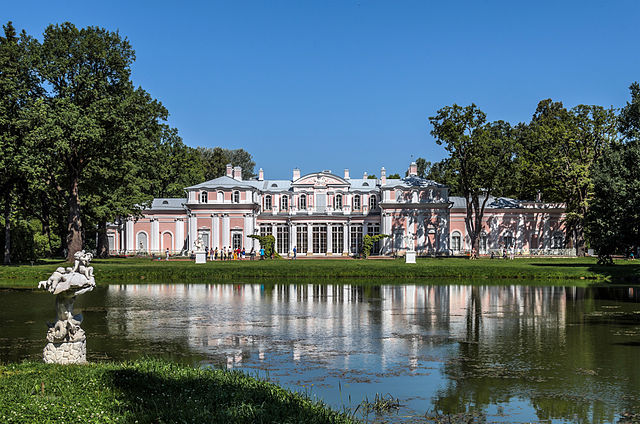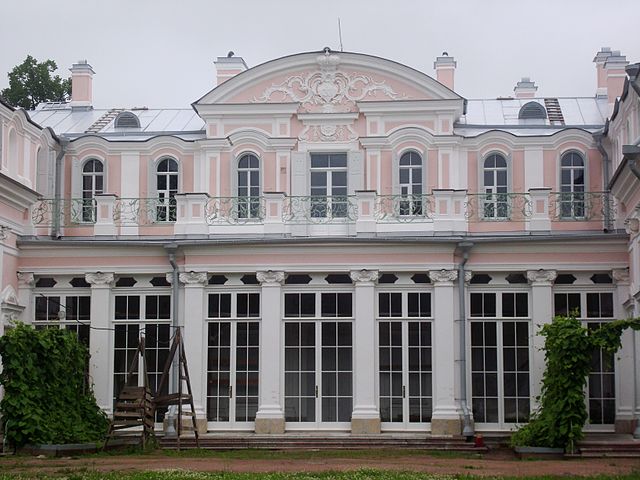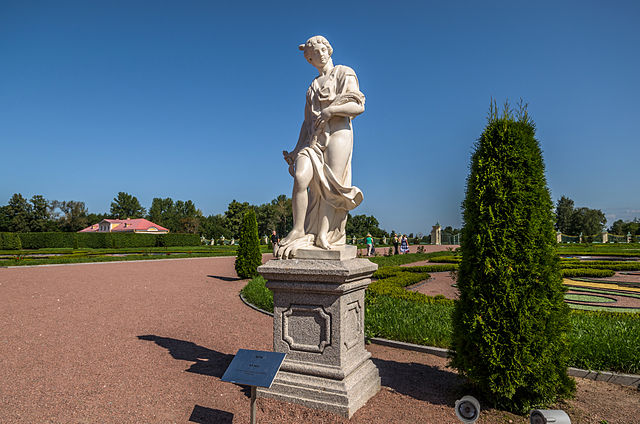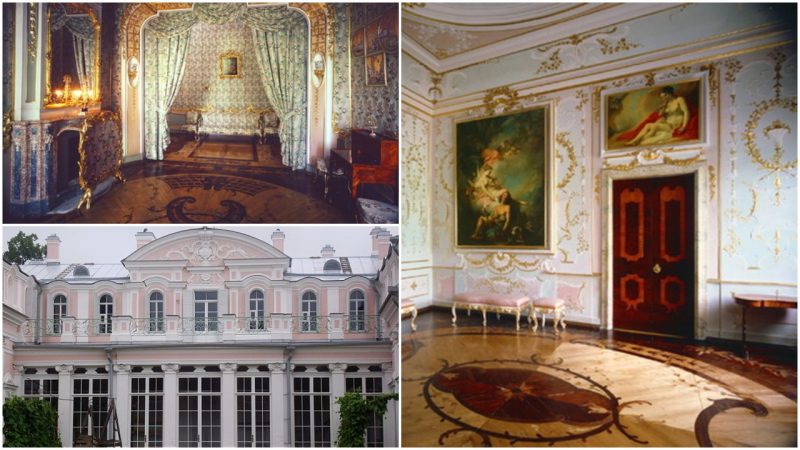As a mixture of several architectural styles which successfully blends styles and elegance, Oranienbaum cannot pass unnoticed among curious time traveling hipsters around the world.
Carefully inspecting the inside of this huge complex, which for centuries operated as a Russian royal residence, Oranienbaum won’t leave anyone indifferent.

The whole complex sits on the Gulf of Finland, west of St. Petersburg. It was bombarded during the WWII but was one of the rare places that were spared from the Nazi occupation. After the war, it was renamed in honor of the scientist and poet, Mikhail Lomonosov. Though many refer to the complex as Lomonosov, it has now taken its old name back – Oranienbaum. After its turbulent past, the complex today doubles as a museum, as well as a public park.

Oranienbaum is the oldest of the Imperial Palaces around St. Petersburg. It was founded by Prince Menshikov, the closest adviser of Peter the Great, who commissioned the building of the Grand Palace, one of the three grandeur places that visitors can see in the complex. The palace resembles a peak of the Petrine architecture and has managed to persist through several centuries without being destroyed.
As generations followed, Russian royal family members commissioned the construction of many buildings that added to the Oranienbaum.

When the Oranienbaum was in the hands of Peter III, he ordered the building of a “Joke” Castle that was accompanied by a small citadel. It was nothing but a toy palace with extravagant interiors. It was restored during the early 1960s of the previous centuryHoweverr, its salmon pink walls are in decay once again, unlike Catherine’s over-the-top Chinese Palace.

The Chinese Palace is one of the most curious buildings constructed in Oranienbaum. It was only recently restored, and primarily designed by Antonio Rinaldi. It’s a unique blend of Rococo on the inside and Baroque on the outside. Added on that, Classicism features, as well as the usage of Chinese motifs make Catherine’s Chinese Palace unlike any other around the world.
The construction of the Chinese Palace was ordered in 1762 as the Empress wished to have a suburb residence, called “My Own Countryside House”.

The Chinese Palace took 6 years to be build, and its construction was accompanied by Katalnaya Gorka, the world’s first roller coaster that descended from the “Russian mountains”, a pavilion that offered roller coaster riders a warm cup of tea, a cupola pavilion, and the Gates of Honor with a tower crowned by a spire.

Although Catherine orchestrated a fine residence for herself, she spent very little time at Oranienbaum and her own countryside house.
The reason was that during her marriage to Peter, she had realized that she hated the place. Hence, fast forward to the end of the 18th century, the property was already turned into a Nadal Cadet College.
